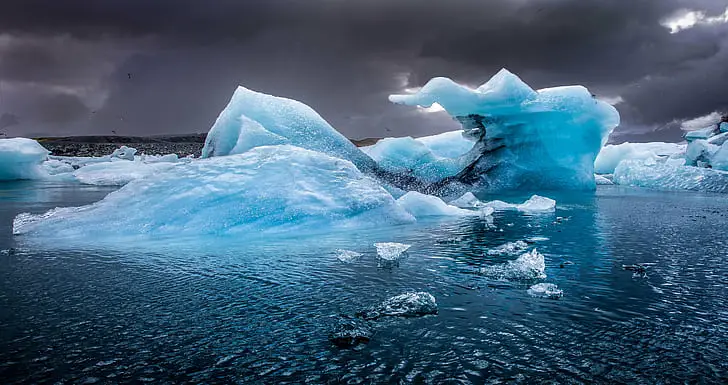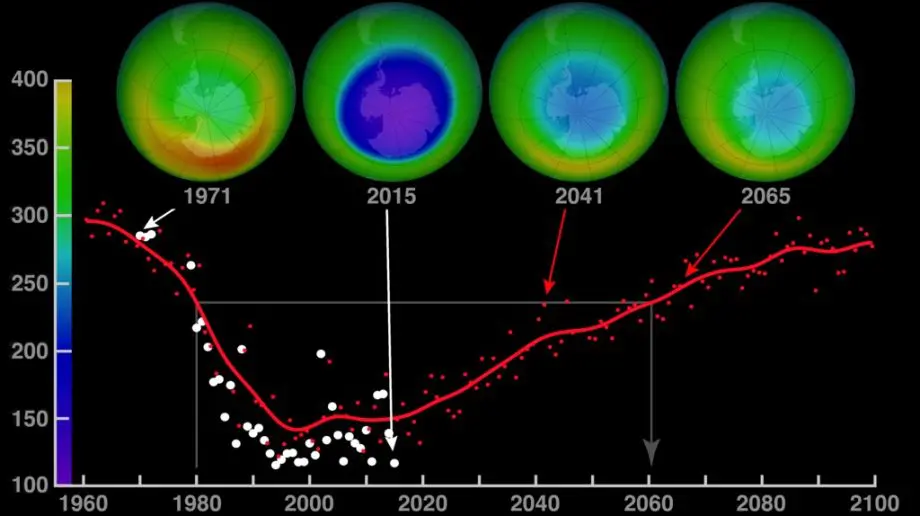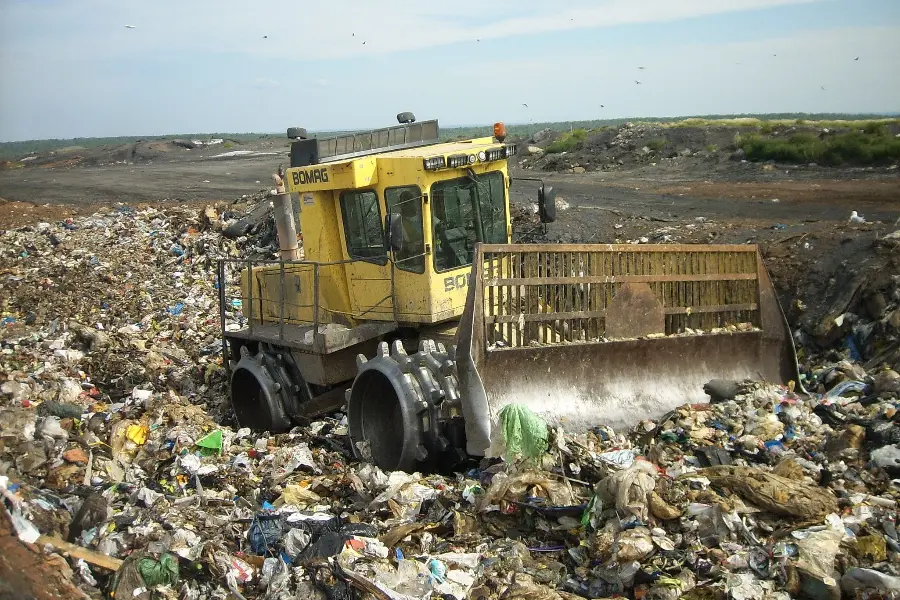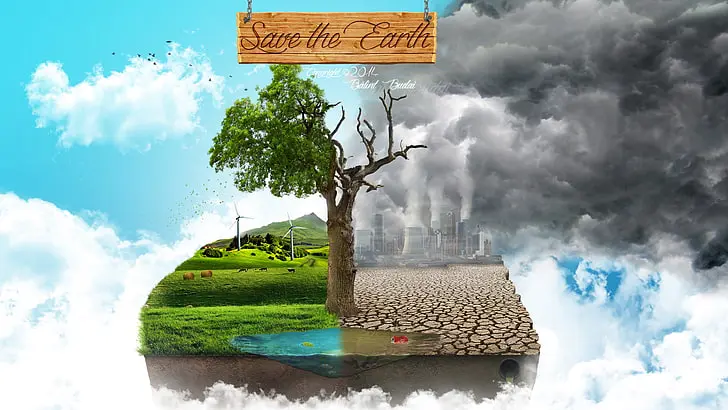
Explore our guide on possible solutions to Global Warming. Uncover practical, eco-friendly steps you can take today for a healthier planet tomorrow.
So, you’re keen to learn about possible solutions to Global Warming, right? Well, you’ve come to the perfect place!
Let’s unpack this hefty topic together and discover how our collective actions can contribute to a healthier, more sustainable planet.
From small daily habits to sweeping societal changes, we’re going to dive deep into ways we can all help turn the tide on this global challenge. Let’s embark on this journey together, shall we?
Introduction: Is Climate Change the Same as Global Warming?
You might be thinking, Isn’t climate change the same as global warming?
It’s a common question and one that we’re going to untangle in this post. While they’re closely related, these two terms aren’t exactly the same thing.
In our journey towards understanding possible solutions to Global Warming, it’s essential we get our basics clear.
We’ll delve into their definitions, their impact on our beautiful blue planet, and why distinguishing between them matters.
This understanding will provide a solid foundation as we explore different aspects of environmental conservation throughout this post.
Ready to dive in? Let’s get started!
Definition and Key Differences
Let’s kick things off with some definitions.
You see, Global Warming refers to the long-term heating of Earth’s climate system observed since the pre-industrial period, and it’s largely due to human activities, particularly the emission of greenhouse gases.
On the other hand, Climate Change is a broader term that refers to long-term changes in temperature, precipitation, wind patterns, and more, across the globe or in a specific region.
This change can be due to natural factors, but also, yes, you’ve guessed it, human activities.
But hey, don’t mix them up! While Global Warming is causing our planet to heat up, Climate Change includes other changes too, like more frequent extreme weather events, shifting wildlife populations and habitats, rising sea levels, and a range of other impacts.
So, you see, they’re part of the same conversation but not the same thing.
Understanding the Impact of Both on the Planet
Now, let’s talk about how Global Warming and Climate Change affect our planet.
When we say Global Warming, we’re talking about a steady increase in Earth’s average temperature, primarily due to the burning of fossil fuels, which releases carbon dioxide and other greenhouse gases into the air.
These gases trap heat from the sun in Earth’s atmosphere causing temperatures to rise, what we call the greenhouse effect.
This, in turn, is causing glaciers to melt, sea levels to rise, and an increase in extreme weather events.
Climate Change, however, includes not just these changes in temperature, but also changes in things like rainfall patterns, severe droughts, more powerful hurricanes and storms, and shifting seasons.
These changes have significant implications for human societies and the natural world.
Getting a good handle on these terms and their impacts will really help as we move forward and discuss possible solutions to Global Warming and Climate Change.
We’re in this together, so let’s keep going!
What are Sources of Water Pollution?
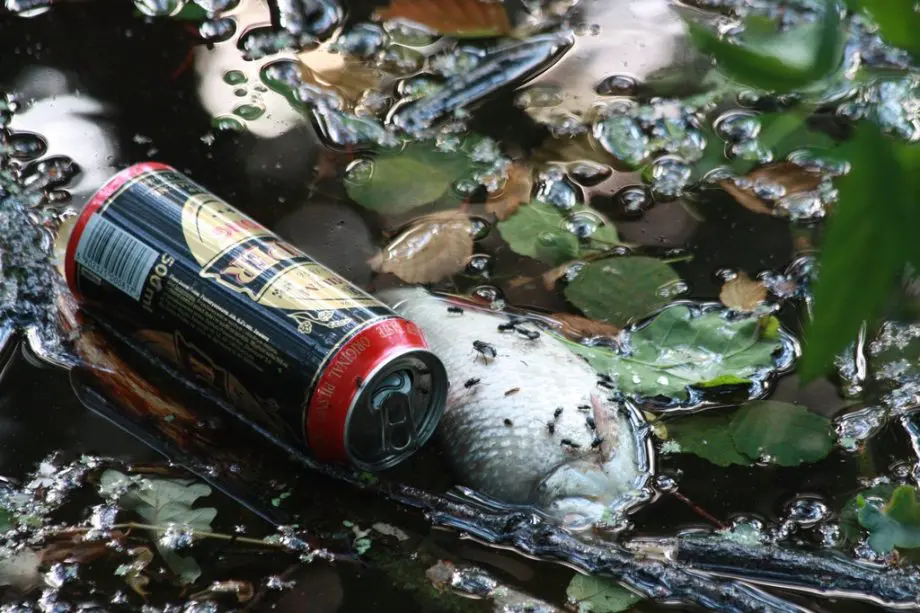
Alright, now that we’ve clarified the differences between global warming and climate change, let’s wade into another crucial topic – water pollution.
What are its sources, you ask? It’s a great question! Water is life’s most precious resource, and yet, we’re dealing with a host of pollution issues that threaten its purity.
From industrial runoff to microplastics, a whole array of culprits are muddying our waters.
In the next section, we’ll plunge into identifying these primary sources of water pollution, as well as discuss how human activities are playing a significant role in it.
Because, after all, understanding the problem is the first step in finding a solution. Let’s dive in, shall we?
Identifying the Primary Culprits
Alright, let’s roll up our sleeves and dive into the nitty-gritty of water pollution.
When we talk about water pollution, a few major culprits come to mind. They are point and nonpoint pollution.
First off, there’s industrial waste. Think factories, power plants, mines, and the like, spewing out chemicals and other toxic materials that seep into rivers and groundwater.
But hold on, there’s more. Agriculture also plays a major part. Excessive use of fertilizers and pesticides can wash into nearby bodies of water, leading to a nasty problem called nutrient pollution.
This can cause algal blooms which harm aquatic life and can make the water dangerous to drink.
And don’t forget about sewage and wastewater. In many places, sewage treatment facilities are either inadequate or non-existent, leading to untreated waste contaminating water sources.
And then there’s littering and plastic pollution, which can harm aquatic life and also affect the quality of the water.
Human Activities and Their Role in Water Pollution
Now, let’s take a step back and see where we, as humans, fit into all of this.
Spoiler alert: we have a significant role in causing water pollution. You see, all these primary sources of water pollution are tied to human activities.
Industrialization, agriculture, and urban development, all these are aspects of our modern life that have unintentional consequences for our water sources.
Every time we flush the toilet, wash our clothes, or even throw away plastic that ends up in the ocean, we contribute to the problem.
Our consumption patterns, lifestyle choices, and even the policies we support can all have an impact on the health of our water resources.
It may feel overwhelming, but remember, understanding the problem is the first step toward finding solutions.
And as we move through this post, we’ll talk about those solutions and what we can do to make a difference. Onwards, friends!
How To Measure Air Pollution At Home
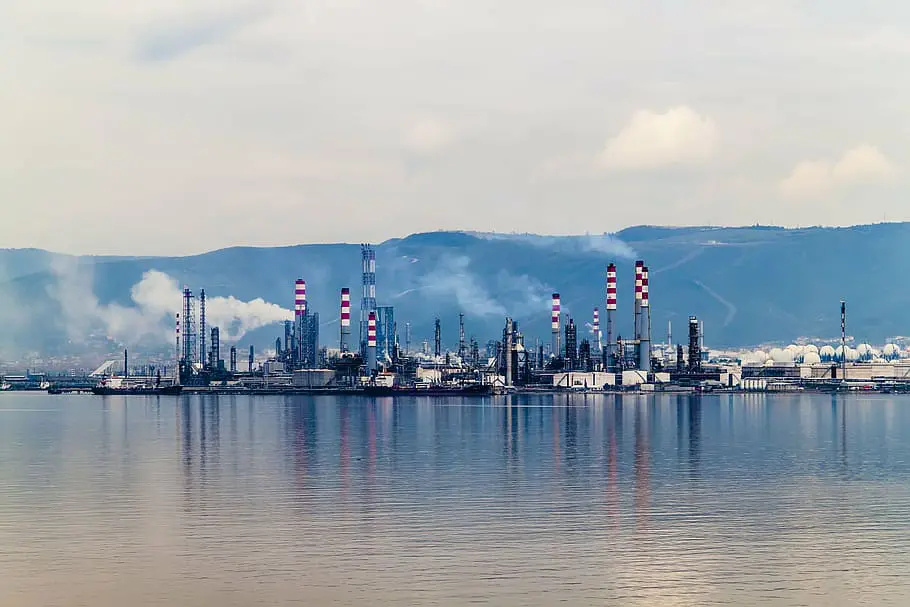
Now that we’ve navigated the murky waters of pollution, let’s catch our breath with a topic that hits a bit closer to home, literally!
Have you ever wondered about the air quality in your own living space? Just because you can’t see it doesn’t mean it’s not there.
Yes, we’re talking about air pollution at home. Figuring out how to measure air pollution indoors can seem a bit daunting at first, but worry not, we’re here to help you breeze through it.
From simple do-it-yourself methods to using specific tools, we’ll explore how you can become an amateur air quality expert right in the comfort of your home. So, let’s clear the air together, shall we?
Tools and Techniques for Measuring Indoor Air Pollution
Ready to become a home-based air quality sleuth? Great!
There are quite a few tools and techniques that can help us measure indoor air pollution.
Some are as simple as keeping an eye out for visible signs of pollution, such as dust accumulation, mold growth, or a lingering smoky smell. Remember, our senses can be powerful tools.
For a more scientific approach, air quality monitors are handy devices.
They come in all shapes and sizes, from larger, more complex systems to smaller, portable gadgets.
These devices measure various pollutants such as particulate matter, volatile organic compounds (VOCs), carbon monoxide, and more.
There’s also the option of indoor air quality testing kits. These kits let you take samples of your air and then send them off to a lab for analysis. Pretty neat, right?
Understanding and Interpreting the Results
Now, having all this data is excellent, but what do we do with it? Well, it’s time to put on our detective hats and interpret the results.
Understanding the numbers can help us identify the sources of air pollution at home, and more importantly, what we can do about them.
Most air quality monitors will provide real-time data and readings for different types of pollutants.
For example, a high particulate matter (PM) reading might mean there’s dust or smoke in your air.
High VOC levels? You might need to check for off-gassing from furniture or cleaning supplies.
Remember, the goal here isn’t just to collect data, but to use it to make our homes healthier.
If we find issues, we can take steps to address them. Maybe we need better ventilation, or perhaps it’s time to switch to eco-friendly cleaning supplies.
Whatever the case may be, understanding our indoor air quality is a crucial step in the right direction. Keep breathing easy, my friends!
How Does Climate Change Affect Coral Reefs?
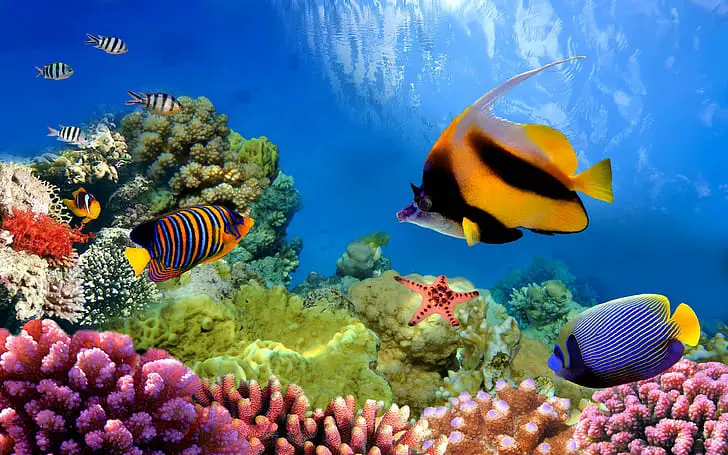
Shall we embark on a virtual dive? Picture clear, blue waters, teeming with life, and vibrant coral reefs painting the seafloor with colors more varied than a painter’s palette. Beautiful, isn’t it?
But here’s the catch, these amazing underwater ecosystems are at risk.
Climate change, our old nemesis, poses a significant threat to coral reefs. But how you ask?
Well, buckle up, fellow explorers, because we’re about to plunge into the relationship between climate change and coral reefs.
Let’s navigate these waters together and learn more about the fascinating world beneath the waves. Dive in!
Impact of Rising Sea Temperatures on Coral Health
Alright, fellow explorers, let’s dive a bit deeper and start with a phenomenon called ‘coral bleaching’.
It sounds harmless, maybe even a little pretty, right? But trust me, it’s far from that.
Coral bleaching happens when corals are stressed by changes in conditions such as temperature, light, or nutrients.
The greatest culprit? You guessed it, rising sea temperatures.
Here’s what happens. The warm conditions stress the corals, causing them to expel the symbiotic algae living in their tissues.
These algae provide corals with food and are responsible for their vibrant colors.
Without them, the corals turn white, hence ‘bleached’. Now, bleached corals aren’t dead, but they are under more stress and are more likely to die.
As global warming causes sea temperatures to rise, coral bleaching events are becoming more frequent and severe.
This isn’t good news for our colorful underwater friends, is it?
Acidification and Its Threat to Coral Reefs
Let’s switch gears and talk about another less-known, but equally threatening issue, ocean acidification.
This is when the pH of ocean waters drops, making them more acidic. Guess what causes this? Yep, it’s our old friend, carbon dioxide.
When we emit CO2, a lot of it gets absorbed by the oceans. There, it reacts with seawater to form carbonic acid, which lowers the ocean’s pH.
Now, why is this a problem for corals? Well, corals build their skeletons from calcium carbonate, a substance that becomes more difficult for them to produce in more acidic conditions.
As ocean acidification progresses, it could make it harder for corals to grow and may even start to dissolve the skeletons of existing reefs.
So, between rising temperatures and acidifying waters, climate change poses a double threat to our beautiful coral reefs.
But don’t lose heart, there’s a lot we can do to help, and understanding the problem is the first step. Let’s keep swimming!
How Does Recycling Help Reduce Pollution?
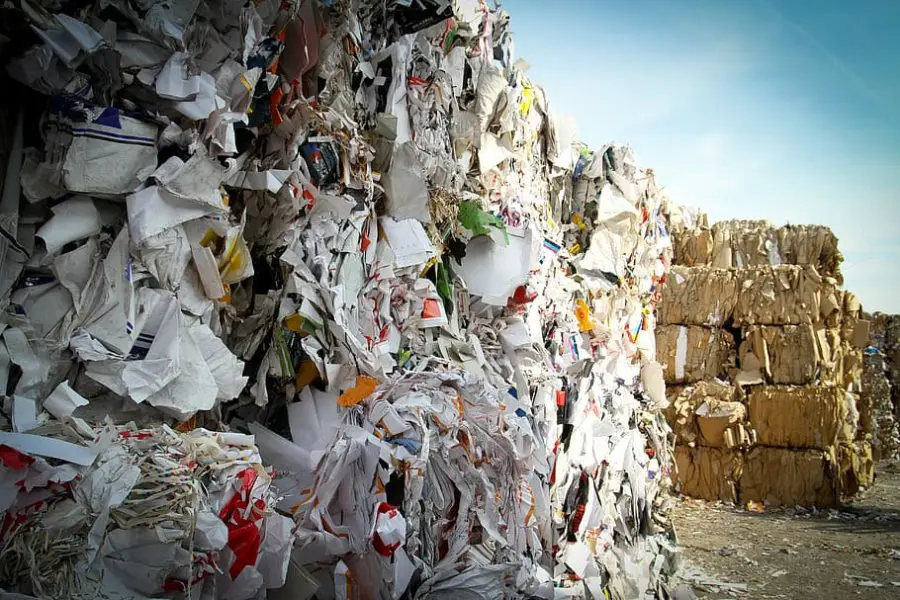
Have you ever wondered what happens to that soda can or newspaper after you toss it into the recycling bin?
Let’s just say, it’s got quite the journey ahead!
Recycling isn’t just about being good stewards of our resources, it’s also a key player in the fight against pollution.
But how, exactly, does recycling help reduce pollution? Glad you asked!
In the following section, we’ll dive into the lifecycle of recyclables, and how by reusing materials, we’re not only conserving resources but also cutting down on pollutants that harm our environment.
Grab your recyclables, folks, it’s time to take a deeper look into the journey from your recycling bin to becoming something entirely new!
The Role of Recycling in Waste Management
So, let’s start at the beginning. Recycling plays a starring role in managing our waste and for good reason.
You see when we recycle things like paper, plastic, metal, and glass, we’re giving these materials a second life.
This means we’re cutting down on the need to extract, refine, and process new raw materials, all of which can be pretty rough on our environment.
Picture this. Each soda can we recycle saves enough energy to run a TV for around three hours.
And, recycling a stack of newspaper just three feet high can save one whole tree.
Plus, less waste in our landfills means fewer harmful chemicals and greenhouse gases being released when waste breaks down.
So, not only does recycling reduce the amount of waste going to landfills and incinerators, but it also conserves natural resources, saves energy, and reduces pollution from extraction and manufacturing. Quite the triple threat, wouldn’t you say?
Quantifying the Pollution Mitigation through Recycling
Now, how about we dig into some numbers to see how recycling really makes a difference in reducing pollution?
According to the U.S. Environmental Protection Agency, recycling and composting prevented about 186 million metric tons of carbon dioxide equivalent from being released into the air in 2013.
That’s like taking over 39 million cars off the road for a year!
Moreover, recycling steel and tin cans save between 60 to 74% of the energy used to produce them from raw materials.
And recycling paper? It uses 70% less energy than making it from raw materials, and for every ton of paper recycled, we can save 17 trees, 380 gallons of oil, and 7000 gallons of water.
When you look at it this way, that recycling bin at home or work suddenly looks like a powerful weapon in the fight against pollution, doesn’t it?
Every bit helps, and together, we can make a world of difference! Let’s keep recycling, folks!
How Do Trees Reduce Air Pollution?
Next on our journey of understanding how we can combat pollution, let’s turn our attention to our tall, leafy friends the trees.
Have you ever paused under the shade of a tree on a hot day and taken a deep, refreshing breath?
Well, you can thank the tree for that! But trees do a lot more than provide us with oxygen.
They’re also one of nature’s most effective air filters. Ready to branch out and explore how trees reduce air pollution?
In the following section, we’ll dig into the amazing ways trees contribute to cleaner air.
So, let’s take a stroll through the forest of knowledge and appreciate the incredible work our leafy allies do for us every day. Here we go!
The Science Behind How Trees Clean Air
Ready to have your mind blown by nature’s incredible design? Let’s talk about how trees clean the air.
It all begins with the process of photosynthesis. You might remember this from science class, it’s the process where trees absorb carbon dioxide, water, and sunlight to create oxygen and glucose.
But trees are doing a lot more than just photosynthesizing. Their leaves and bark also capture pollutants like nitrogen oxides, ammonia, sulfur dioxide, and ozone.
And get this, they can even absorb tiny particulate matter! These particles, often a product of vehicle exhaust and industrial processes, are harmful when inhaled, so trees are literally cleaning the air for us.
And if that wasn’t impressive enough, trees also reduce air temperature by blocking sunlight, which in turn reduces the formation of ground-level ozone, a harmful pollutant.
Quantifying the Impact of Trees on Air Quality
Now, let’s talk numbers. How significant is the impact of trees on air quality, you ask?
Well, according to the U.S. Forest Service, trees in the U.S. alone remove about 17.4 million tons of air pollution per year!
That’s an estimated health effect value of 6.8 billion dollars annually. Pretty impressive, right?
In urban areas, trees have an even more direct impact on us.
For example, a study conducted in London found that the city’s trees remove somewhere between 850 and 2000 tons of particulate pollution per year.
And another study showed that an increase in tree canopy cover of just 1% in Los Angeles could reduce PM10 (tiny particulate matter) by around a quarter of a ton per square mile annually.
So next time you take a breath of fresh air under a tree, remember, that tree is working hard for you and our planet.
We should certainly return the favor, don’t you think? Let’s keep planting and protecting our trees!
Does Solar Panels Help Climate Change?
How about we catch some rays for our next topic? No, not sunbathing, but something equally exciting, solar panels!
As we search for ways to reduce our carbon footprint and combat climate change, renewable energy sources, like solar power, are lighting up our path to a sustainable future.
But how much of a difference can harnessing the power of the sun really make?
In the next section, we’ll explore how solar panels work, and their potential to help slow down climate change.
So, grab your sunglasses and join us as we shine a light on the bright potential of solar energy! Here comes the sun!
Understanding How Solar Panels Reduce Carbon Emissions
Did you know that by harnessing the power of the sun, we can reduce our dependence on fossil fuels?
That’s right, solar panels, or photovoltaics (PV), convert sunlight directly into electricity.
Now, how does that help reduce carbon emissions, you ask?
Well, let’s consider the traditional way we produce electricity. We burn fossil fuels like coal and natural gas, right?
This process emits a large amount of greenhouse gases, particularly carbon dioxide (CO2), which contributes significantly to global warming.
Enter solar panels. They generate electricity without burning anything or producing greenhouse gas emissions.
This clean, renewable source of energy is essentially carbon-free post-production.
It’s like having a mini power plant on your roof that doesn’t contribute to global warming!
Potential Impact of Widespread Solar Energy Use
Now, let’s dream big and imagine a world where solar energy is our primary power source.
According to a study by the U.S. Department of Energy, solar power could potentially supply up to 40% of the nation’s electricity by 2050, reducing our carbon emissions by hundreds of millions of metric tons annually.
Even now, the impact of solar energy is significant.
According to the Solar Energy Industries Association, the solar capacity already installed in the United States is expected to offset as much as 110 million metric tons of CO2 annually.
That’s equivalent to taking 23.6 million cars off the road or planting 1.7 billion trees!
So, as you soak up some sunshine, remember that those rays have the power not just to brighten our day but also to brighten our planet’s future.
The more we turn to renewable energy like solar power, the more we can combat climate change. Let’s keep our faces to the sun, folks!
Does Geothermal Energy Cause Pollution?
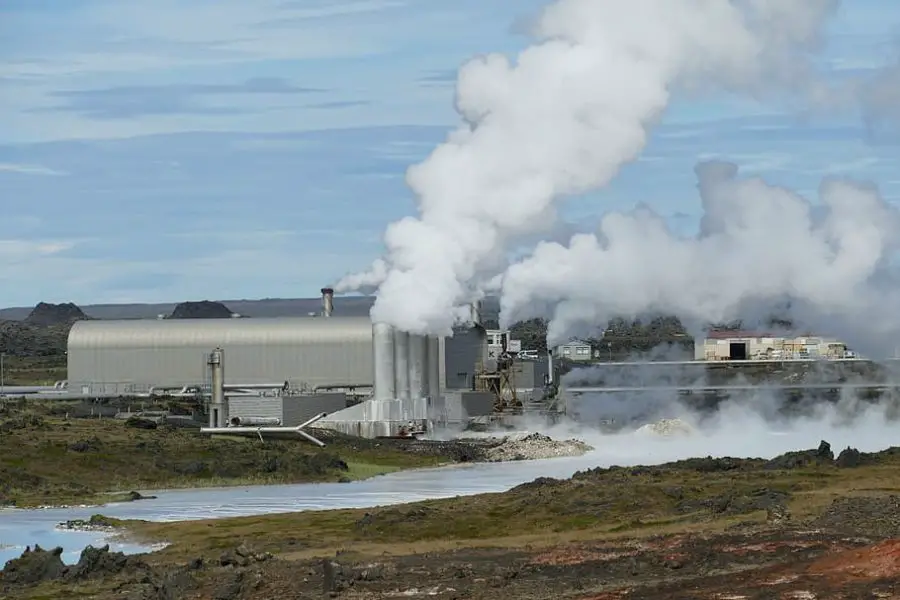
Now that we’ve soaked up the sun, how about we dive beneath the Earth’s surface for our next topic?
That’s right, we’re going to explore geothermal energy, a form of renewable energy harnessed from the natural heat beneath our feet.
But you might be wondering, does tapping into this underground powerhouse cause pollution?
As we explore geothermal energy in the following section, we’ll dig into its benefits and potential drawbacks, and assess its overall impact on our environment.
So, put on your virtual hard hats, and let’s journey to the Earth’s depths and unlock the secrets of geothermal energy together!
Evaluating the Environmental Footprint of Geothermal Energy
So, let’s get down to earth and talk about geothermal energy. It’s a fascinating form of power that comes from the thermal energy stored in the Earth.
Geothermal power plants tap into this heat to generate electricity. But you might be wondering, does this extraction process cause pollution?
Well, it’s time to clear the air. Compared to fossil fuels, the environmental footprint of geothermal energy is relatively low.
Geothermal power plants produce less than one-sixth of the carbon dioxide that a relatively clean natural-gas-fueled power plant produces, and very little if any, of the nitrous oxide or sulfur-bearing gases, which can cause health problems and contribute to acid rain.
But that doesn’t mean geothermal energy is without any environmental concerns.
The process of drilling geothermal wells can cause some surface disturbance, and geothermal plants can produce some solid waste and spent geothermal fluids.
However, with proper management and disposal methods, these potential impacts can be significantly mitigated.
Comparing Geothermal Energy to Other Energy Sources
Now, how does geothermal stack up against other energy sources?
On the renewable front, geothermal energy is a real heavyweight. Unlike wind and solar, it doesn’t depend on the weather or time of day; it can provide constant, round-the-clock energy.
This reliability makes geothermal a valuable player in the renewable energy lineup.
Compared to fossil fuels, geothermal energy is cleaner, and renewable, and can help us reduce our carbon footprint.
Plus, geothermal energy is a home-grown energy source, which can help countries reduce their dependence on imported fuels and increase their energy security.
In short, while no energy source is without its impacts, geothermal energy’s advantages in terms of emissions and reliability make it a hot topic in our search for sustainable energy solutions.
Let’s keep drilling into our knowledge about renewable energy!
Does Recycling Help Global Warming?
Let’s circle back to a topic we touched on earlier, recycling.
But this time, let’s look at it from a slightly different angle: its impact on global warming.
We all know that recycling is a good practice, but just how much can it help slow down the heating of our planet?
In the following section, we’ll sift through the facts and figure out the link between your recycling bin and the Earth’s thermostat.
Get ready to dive into the world of recycling once again, this time, with a focus on our climate. Let’s roll up our sleeves and sort this out together!
How Recycling Reduces Greenhouse Gas Emissions
When you toss a can or a bottle into the recycling bin, do you realize the journey it’s about to embark on?
Let’s follow along. When we recycle materials, we’re preventing the need for new ones to be created. Why is that important?
Because extracting and processing raw materials for manufacturing is a major source of greenhouse gas emissions.
Let’s take aluminum cans as an example. Producing new aluminum cans from raw materials requires a great deal of energy, much of which comes from burning fossil fuels.
On the other hand, recycling aluminum can use up to 95% less energy.
Less energy required means fewer fossil fuels burned and fewer greenhouse gas emissions.
The same goes for other materials like paper and plastic, recycling them saves a significant amount of energy and reduces emissions.
The Limitations and Potential of Recycling
But let’s keep it real. Recycling alone isn’t a magic bullet for global warming. There are limitations.
Not all materials are recyclable, and not all recyclable materials end up being recycled due to factors like contamination or lack of recycling facilities.
But that doesn’t mean we should discount the value of recycling. By improving recycling technologies, infrastructure, and public participation, we can maximize its climate benefits.
Plus, recycling goes hand in hand with other sustainable practices like reducing our consumption and reusing items as much as possible.
So, the next time you recycle, remember you’re not just diverting waste from the landfill.
You’re also playing a part in our collective effort to turn down the heat on our planet. Keep recycling, folks!
And remember, every bit helps when it comes to combating global warming.
Do Air Conditioners Filter Pollution?
Let’s switch gears and talk about a device that many of us rely on for comfort, especially during the hot summer months, the humble air conditioner.
But beyond keeping us cool, can air conditioners play a role in filtering pollution from our indoor air?
You might be surprised by what these cooling machines can do. In this section, we’re going to delve into the capabilities of air conditioners and explore whether or not they can help us breathe easier.
So, take a seat, grab a cold drink, and let’s dive into the cool world of air conditioners together!
How Air Conditioners Filter and Circulate Air
Ever wondered how your air conditioner not just cools your space but also seems to freshen up the air?
It’s all about the filters and circulation!
Air conditioners work by circulating air through a series of filters. These filters trap a variety of airborne particles such as dust, pollen, and some types of mold.
As the air gets drawn in, these particulates get caught in the filter, and the air that gets blown back into the room is cleaner than before.
Also, air conditioners help in maintaining a lower humidity level indoors, which reduces the growth of certain bacteria and mites.
So, by cooling down, filtering, and dehumidifying our air, air conditioners play an integral role in enhancing our indoor air quality.
The Effectiveness and Limitations of Air Conditioners in Pollution Control
But, it’s important to know that while air conditioners can filter some types of indoor pollution, they’re not a complete solution.
The filters in most air conditioners are designed to catch larger particles, and they may not effectively remove smaller particulates like some types of mold spores or chemical pollutants.
Moreover, the efficiency of air conditioners in filtering air largely depends on the maintenance of these systems.
A clogged or dirty filter will not only reduce the efficiency of your AC unit but could also blow back some of the trapped particles into your room.
So, while air conditioners can contribute to cleaner indoor air, they should be complemented with other practices like regular cleaning, good ventilation, and, where necessary, air purifiers to ensure the best possible air quality.
Keep your filters clean and your air even cleaner, folks!
Conclusion: Why Does Climate Change Matter?

As we near the end of our enlightening journey exploring possible solutions to global warming, let’s pause for a moment to consider a crucial question.
Why does climate change matter so much?
This is more than just an academic exercise. It’s about our home, our planet, and our future.
In this concluding section, we’re going to revisit the gravity of climate change and the urgency of finding and implementing solutions.
Because when it comes to our Earth, there’s no place like home, and it’s worth every effort to protect it.
So, let’s take a moment to reflect, remember, and reignite our resolve in the face of climate change. Here we go!
Impact of Climate Change on Human and Planetary Health
As we’ve seen throughout our journey, climate change is much more than just a few degrees of temperature rise.
It’s a domino effect that impacts every aspect of our planet and our lives.
Rising temperatures can exacerbate health issues like heart and lung conditions, increase the prevalence of vector-borne diseases, and lead to more heat-related illnesses and deaths.
Extreme weather events, such as storms, floods, and droughts, are becoming more common and more severe, posing risks to life, property, and livelihoods.
Our planet’s health is at stake too. We’ve seen how global warming is causing coral reefs to bleach and die, threatening the diverse marine life that depends on them.
Rising sea levels are swallowing coastal habitats, while wildfires, fueled by hotter, drier conditions, are devastating forests and the creatures that live in them.
The Imperative for Collective and Individual Action
The magnitude of the climate crisis might feel overwhelming, but here’s the silver lining.
We can make a difference, both individually and collectively. Each one of us can adopt more sustainable practices in our daily lives, such as recycling, reducing our consumption, and using energy more efficiently.
On a collective level, supporting renewable energy, advocating for climate-friendly policies, and encouraging businesses to go green are all crucial.
Every action counts, and together, we can tip the scales toward a more sustainable future.
Reiteration of the Importance of Action
And let’s not forget why we’ve embarked on this journey in the first place.
Our actions today will determine the health of our planet tomorrow.
The steps we take now, big or small, can help curb global warming and pollution and safeguard our future.
Success Stories in Climate Change Mitigation
Fortunately, we’re not starting from scratch. There are already inspiring success stories around the world.
Countries like Denmark and Costa Rica are leading the way in renewable energy.
Cities are becoming greener, with initiatives like tree-planting campaigns, bike-friendly policies, and waste reduction programs.
Businesses are embracing sustainability, and innovators are coming up with exciting new technologies to combat climate change.
Emphasizing the Urgency for Continued Efforts
While these success stories provide hope, there’s no time for complacency.
The urgency of the climate crisis demands continued and escalated efforts.
We need to carry forward the momentum, keep pushing for progress, and inspire others to do the same.
After all, when it comes to protecting our planet, there’s no time like the present.
So, here’s to our shared home and to each of us who’s doing our part to protect it.
The challenge is great, but so is our resolve. Keep going, folks! We’re all in this together.
Read more about Global Warming

